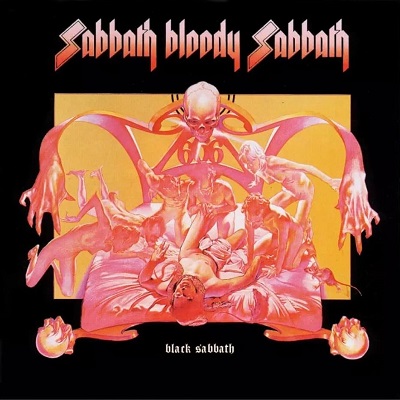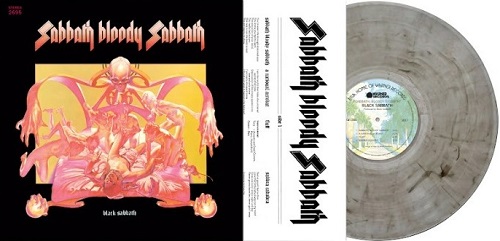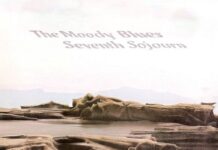When it comes to Black Sabbath albums, the go-to’s seem to be the first three — Black Sabbath, Paranoid, and Master Of Reality. There’s little argument that these early records are the very definition of Black Sabbath at their very heaviest. Vol. 4 kept the rock as hard and visceral as possible. Sabbath Bloody Sabbath, the band’s fifth album released November 1973, saw the group exploring a more refined soundscape, layering up the guitars, changing time signatures, even bringing synthesizers into the mix. It was a definite step forward for Black Sabbath as their sound was enhanced with a sophisticated edge — all without tarnishing their dark, star-crossed image.
Black Sabbath, Paranoid, and Master Of Reality have been reissued as deluxe editions, while expanded box sets of Vol. 4, Sabotage, and Technical Ecstasy upped the ante in more recent years. The 50th anniversary of Sabbath Bloody Sabbath was nearly bypassed until Rhino decided to add it to the limited-edition classic album ‘Start Your Ear Off Right’ list of releases for January 2024. The smoky vinyl version of Sabbath Bloody Sabbath brings back everything there is to love about this album.
When it came to recording Sabbath Bloody Sabbath, the band was in the grips of a cocaine haze. As was common in the early 70s, success often leads to excess. In 1973, Black Sabbath were taking a break from touring, living it up in Los Angeles, and making plans for their next album. Nothing really happened until they headed back to England and rented out Clearwell Castle to record. This is where guitarist Tony Iommi came up with the “Sabbath Bloody Sabbath” riff. After that, the group fell into a groove and the music came together. Whether or not, the spooky vibe around the castle had anything to do with it is anyone’s guess.
In his autobiography, Into The Void, Sabbath bassist Geezer Butler says that making Sabbath Bloody Sabbath was “probably the happiest time of my life up to that point.” He goes on to say that the group was heavily into the experimentation, which led to the album’s slicker, tighter sound. The bassist, who wrote a majority the lyrics for Sabbath’s songs, also came up with the snappy riff that drives “A National Acrobat,” one of the band’s great hidden wonders.
Singer Ozzy Osbourne, who commented on the album’s “balance” of old heaviness and new experimentation, helms the synthesizer on “Who Are You?,” a song he also wrote on his own. Keyboardist Rick Wakeman, recording at a nearby studio with Yes, offers a subtle swipe at the synths and piano on “Sabbra Cadabra.” Iommi’s acoustic instrumental “Fluff” is yet another shade applied to the album’s canvas. That light touch extends to the climatic “Spiral Architect,” which blossoms and taps into Sabbath’s hard-won melodic sensibilities as much as it carefully aligns the embedded guitar crunches with poignant orchestration.
The title track and “Killing Yourself To Live” reference the struggle of rockstar indulgences and frustrations the band was experiencing at the time. Despite the front of worldwide success, there was a nasty undercurrent pulling away at the fabric of Black Sabbath. As much as it contributed to the group’s creative juices, it wouldn’t encroach upon other personal issues for another five years.
Sabbath hit the road in support of Sabbath Bloody Sabbath at the end of 1973 and well into 1974. It went Gold just before an epic appearance at the California Jam with Deep Purple, Emerson, Lake & Palmer, and the Eagles on the bill. At this point in their history, Sabbath was an international phenomenon, selling more records, taking Sabbath Bloody Sabbath to the Top 20, and eventually to platinum status. By the time they got around to the follow-up, 1975’s Sabotage, Black Sabbath was one of the biggest rock bands in the world.
Listening to the ‘Start Your Ear Off Right’ smoky vinyl version of Sabbath Bloody Sabbath is one way to celebrate the album’s belated birthday, but is there more? Fans speculate video from the California Jam should be part of any box set. That may be a stretch, though certainly a live show or two, outtakes, perhaps unreleased tracks, could all help fill out a proper anniversary package. At 50 and counting, Sabbath Bloody Sabbath deserves as much recognition, if not more, as the other seven albums the original Black Sabbath lineup recorded.





















